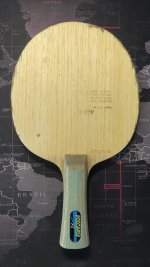says
Xxxxxz
I'm really struggling with glues at the moment. I've tried several different brands of table tennis glue and none of them seems to hold the rubber securely. At first I thought I was just being unlucky with dodgy batches of glue, but the longer this goes on it must be something else. I've even just tried donic blue contact glue based on the fact it's supposed to be extra strong.
My blade is varnished and I've started to notice that whenever I peel a rubber off of the blade, there is never any glue left on the blade itself; the blade layer of glue is always stuck to the sponge layer of glue which is stuck on the sponge. So basically it seems that the "week link in the chain" is the bond between the blade layer of glue and the blade. My assumption is that a varnished blade has a weaker bond with the glue than a non varnished blade. Is this correct and would I be better to ditch the varnish to get a stronger bond?
Thanks
Stuart
My blade is varnished and I've started to notice that whenever I peel a rubber off of the blade, there is never any glue left on the blade itself; the blade layer of glue is always stuck to the sponge layer of glue which is stuck on the sponge. So basically it seems that the "week link in the chain" is the bond between the blade layer of glue and the blade. My assumption is that a varnished blade has a weaker bond with the glue than a non varnished blade. Is this correct and would I be better to ditch the varnish to get a stronger bond?
Thanks
Stuart










